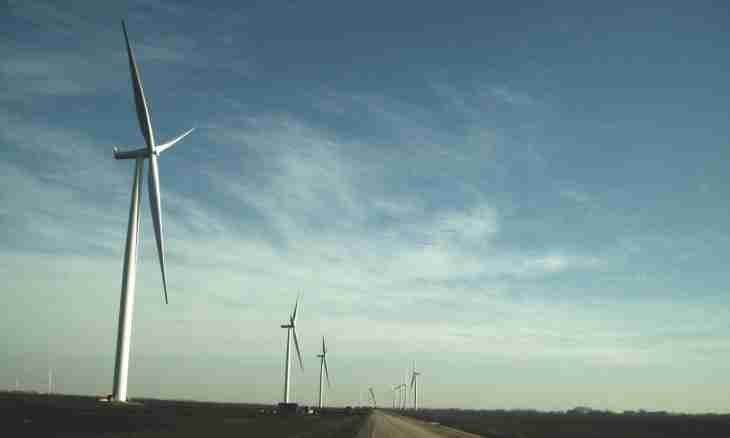Speed of wind can be determined by means of Beaufort's scale developed in 1806. Process of definition consists in visual consideration of interaction of wind with various objects on the land and in the sea.
Instruction
1. For determination of the speed of wind designating a calm and reaching 1 km/h you have to note that leaves on trees remain motionless, and smoke rises strictly vertically. At the sea to a calm there corresponds the unruffled surface and total absence of nervousness.
2. Define whether there are smoke deviations from the vertical direction and whether there are motionless leaves of trees. In the same time for the sea there are easy ripples, and wave height fluctuates within 10 cm. If this is so, then the speed of wind is from 2 to 5 km/h and corresponds to 1 point on Beaufort's scale. Such air is called light.
3. When wind poorly kolysht leaves of trees, turns a weather vane a little and is felt as the person, it designates that its speed reaches from 6 to 11 km/h. At the sea to a breeze there corresponds emergence of short waves and vitreous crests.
4. To define the light breeze equal to 3 points on Beaufort's scale, look whether thin branches shake and whether falls down the smoke which is coming out a pipe top. At the sea at such wind there is an easy nervousness, foamy crests and small white lambs. Speed of a light breeze fluctuates from 12 to 19 km/h.
5. If wind moderate, you notice that dust is kicked up from the earth, smoke is dissolved in air, and branches of average size actively fluctuate. Waves at the sea reach 1.5 meters in height. To moderate wind there corresponds speed from 20 to 28 km/h.
6. For determination of the speed equal to 5 points on Beaufort's scale, note that wind is felt by hands and whistles in ears, thin trunks of trees shake. The heavy sea, with a large number of white lambs, and wave height reaches 2 meters. Such wind is called fresh, and its speed can reach 38 km/h.
7. At strong wind you will see that thin trunks of trees bend, and will hear buzz of cable wires. At the sea there will be waves rising up to 3 meters, water dust and big crests. To strong wind there corresponds speed from 39 to 49 km/h.
8. Big branches bend to the earth, and it becomes heavy to go against wind - it means that its speed reaches from 50 to 61 km/h. At the sea there is a strong nervousness, foam breaks from crests of waves and creeps downwind. Such wind corresponds to 8 points on Beaufort's scale and is called strong.
9. At very strong wind of a branch of trees begin to break, and it becomes impossible to speak. Waves at the sea reach 7 meters in height, from edges of crests splashes fly. To such wind there corresponds speed from 62 to 74 km/h.
10. For determination of the speed equal to 9 points on Beaufort's scale, note that wind bends big trees, breaks large branches and breaks a tile from roofs. Crests of sea waves reach 8 meters in height, overturn and scatter in splashes. Such wind is called storm, and its speed can reach 88 km/h.
11. The whole gale on the land happens very seldom. It destroys buildings, uproots trees. Wind speed at a whole gale fluctuates from 89 to 102 km/h. The surface of the sea grows white from foam, and wave height reaches 10 meters.
12. At a storm serious destructions in extensive territories are observed. Speed of wind is at most 117 km/h. Small vessels cannot be seen because of waves which height can reach 11 meters.
13. The wind reserving devastating destructions is called a hurricane. Air at the sea is filled with foam and splashes, visibility is complicated. Waves exceed 11 meters in height. Speed of a hurricane is more than 117 km/h.

